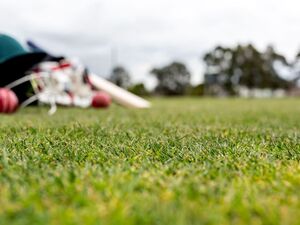Choosing the Best Sports Artificial Grass for Kiwi Clubs
Body
Choosing the Best Sports Artificial Grass for Kiwi Clubs
When it comes to outfitting a sports field, choosing the right surface is crucial for both performance and longevity. As a growing number of Kiwi sports clubs are discovering, sports artificial grass offers a versatile, durable, and safe playing surface that meets the unique demands of high-use sports fields. Here’s a guide to selecting the best sports artificial grass for your club, covering the features that make the biggest difference for players and facilities alike.
Understanding Your Club’s Needs
Before diving into the specifics of artificial grass, it’s essential to consider the unique needs of your club. Think about the types of sports that will be played on the field, the volume of traffic it will receive, and the climate conditions in your area. For example, a field used primarily for soccer or rugby will have different requirements than one used for multi-sport activities. Taking these factors into account will help narrow down the choices to find a turf that aligns perfectly with your club’s needs.
Durability for High Traffic and Intense Use
Sports fields endure heavy use, from regular practices to intense matches. When choosing artificial grass, prioritise options designed specifically for high-impact sports. Look for materials known for durability, as these will withstand wear and tear over time without needing frequent replacement. The best sports artificial grass products feature resilient fibres and reinforced backing, ensuring the turf maintains its shape and function even under continuous use. This durability is especially important for clubs that rely on a single field to host multiple teams and events.
Cushioning for Player Safety
Safety is paramount, and a quality artificial grass product should provide adequate cushioning to reduce impact injuries. Many high-performance artificial grass systems include a shock-absorbing layer beneath the surface, which provides a softer landing and reduces strain on players’ joints. This feature is particularly valuable for contact sports like rugby, where falls are common, and for younger players who need additional protection. A cushioned field enhances safety, supporting your club’s commitment to player wellbeing.
All-Weather Playability
New Zealand’s weather can be unpredictable, and having a field that remains playable in all conditions is a huge asset. Look for artificial grass with efficient drainage systems that allow rainwater to pass through quickly, preventing puddles and keeping the field usable shortly after heavy rain. This all-weather capability ensures that practices and games don’t need to be rescheduled due to field conditions, providing a more reliable facility for both players and organisers.
Consistent Performance Characteristics
One of the primary reasons sports clubs choose artificial grass is its consistent performance across the entire surface. Natural grass fields can develop patches and uneven areas that affect ball roll and player movement. Sports artificial grass, on the other hand, offers uniform traction and predictable ball behaviour, allowing athletes to rely on the surface for precise movements. For clubs focused on competitive sports, this consistency enhances gameplay and supports player development by providing a reliable training environment.
Maintenance Requirements and Cost Efficiency
Maintaining natural grass fields can be time-consuming and costly, requiring regular mowing, watering, fertilising, and repair work. With sports artificial grass, these demands are significantly reduced. Minimal maintenance means fewer expenses and less time spent on upkeep, allowing clubs to redirect resources toward other essential areas. When choosing artificial grass, look for options that are easy to clean and maintain, as this will further reduce the long-term maintenance burden.
UV Stability for Long-Lasting Colour
High-quality sports artificial grass is designed to resist UV radiation, ensuring the turf retains its vibrant green colour even under constant exposure to sunlight. For clubs that want their field to look professional and well-maintained, UV-resistant artificial grass is a must. This feature not only preserves the aesthetic appeal but also contributes to the turf’s longevity, making it a smart investment for clubs that want a field that lasts.
Eco-Friendly Considerations
As environmental awareness grows, many clubs are seeking eco-friendly options for their facilities. Sports artificial grass offers several sustainable benefits, including reduced water usage and the elimination of chemical treatments. By choosing artificial turf, clubs can help conserve water and reduce chemical runoff into the environment. This eco-friendly choice not only aligns with sustainable practices but also presents an opportunity for clubs to showcase their commitment to responsible field management.
Budgeting for Quality and Longevity
While artificial grass may have a higher upfront cost than natural grass, its longevity and low maintenance make it a cost-effective choice in the long run. High-quality sports artificial grass can last over a decade with minimal upkeep, providing clubs with a reliable playing surface that doesn’t require constant repairs or replacements. When selecting artificial grass, consider your budget not only in terms of installation but also in terms of the savings you’ll enjoy from reduced maintenance over time.
Final Thoughts: Making the Right Choice for Your Club
Selecting the best sports artificial grass for your Kiwi club means balancing performance, safety, and sustainability. By considering the specific needs of your teams, the level of durability required, and the long-term maintenance costs, you can choose a turf that supports high-quality gameplay and player safety.











Comments